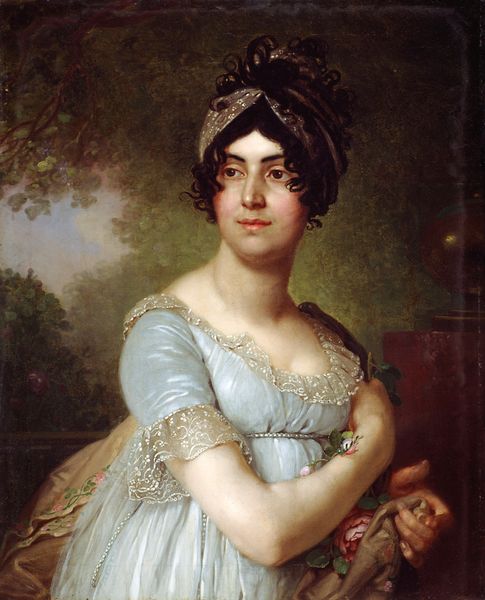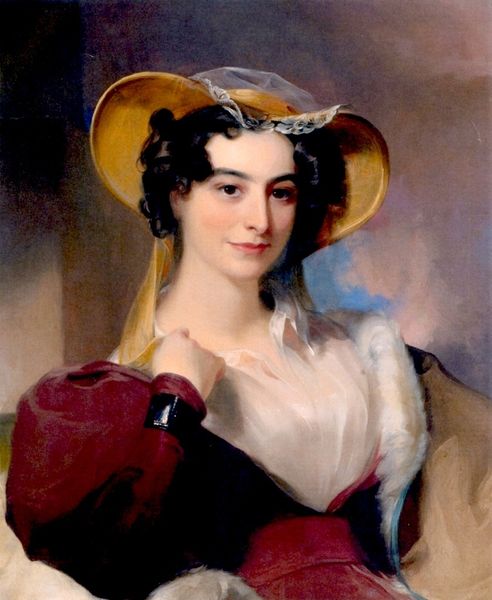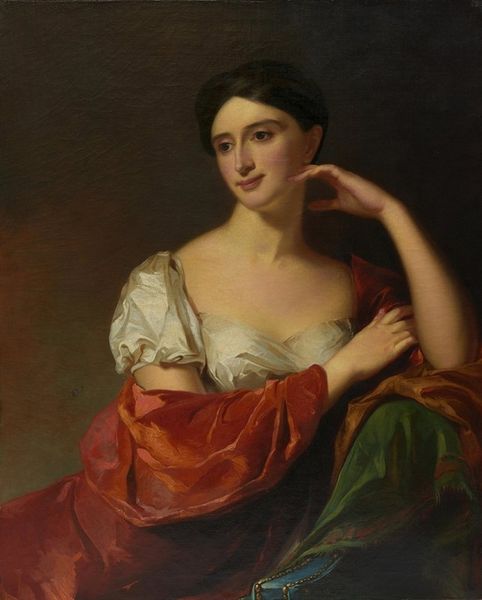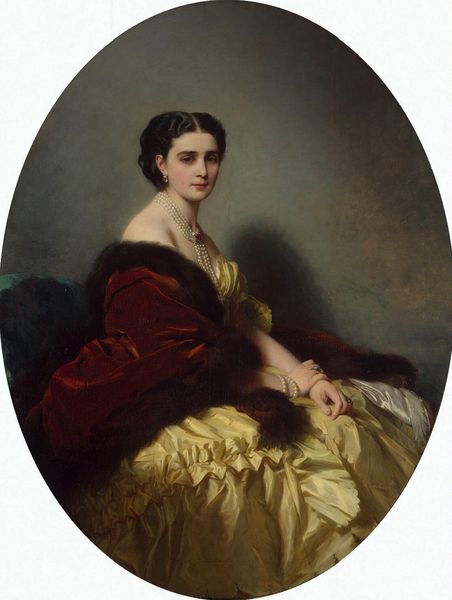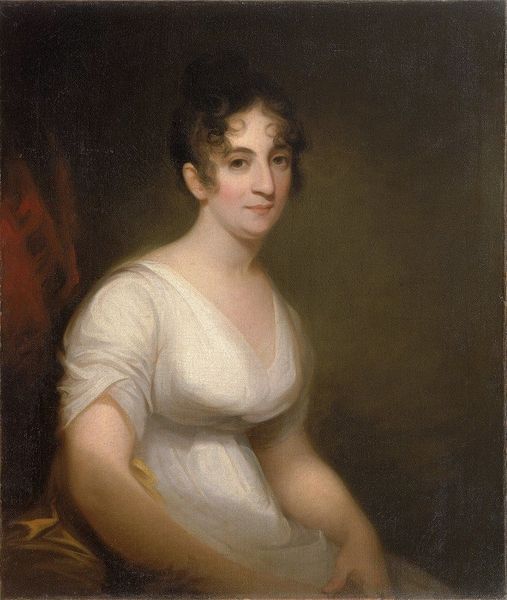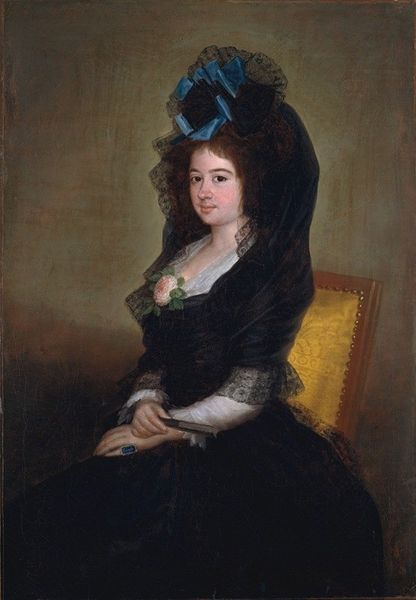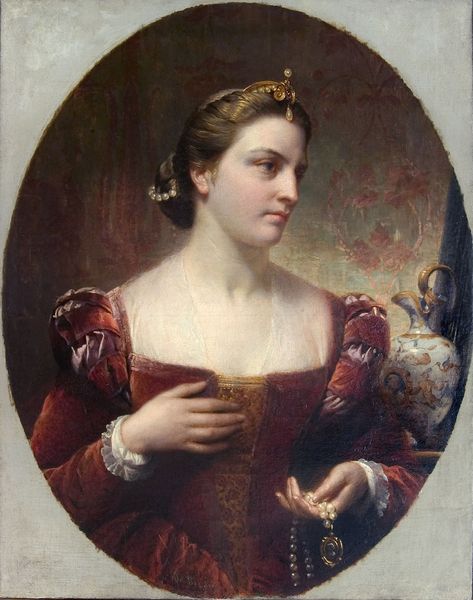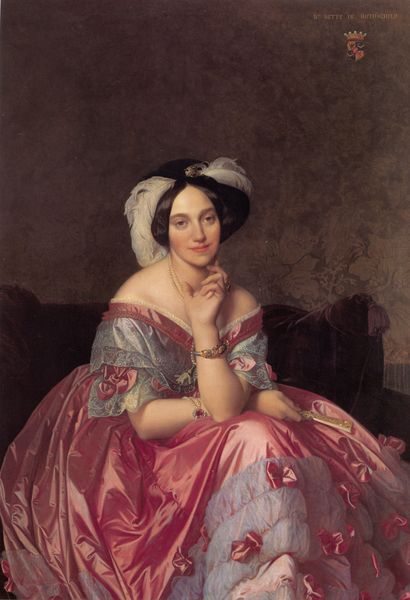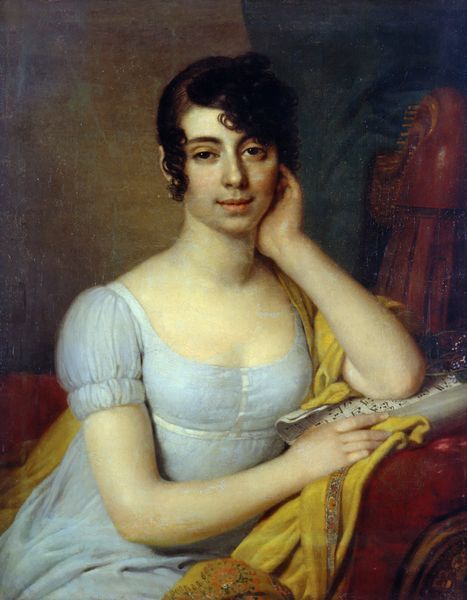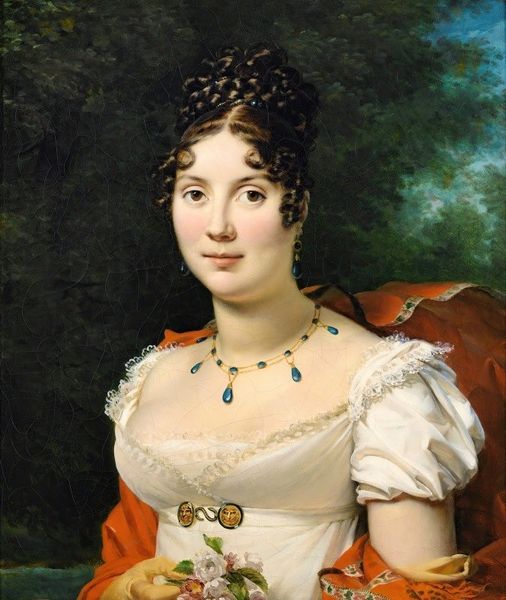
painting, oil-paint
#
portrait
#
painting
#
oil-paint
#
romanticism
#
history-painting
Copyright: Public domain
Thomas Sully painted this portrait of Elizabeth Anne Bates, capturing her likeness with oils on canvas. Sully, living between 1783 and 1872, operated in a cultural milieu where portraiture served as a powerful marker of social status and personal identity. In this painting, Bates is portrayed with a soft, romantic gaze, embodying the era’s ideals of femininity and beauty. Yet, consider how the construction of such images also subtly reinforced societal expectations for women – quiet, demure, and primarily objects of aesthetic admiration. The very act of commissioning a portrait like this speaks volumes about the subject's position in society. Sully’s artistic choices – the gentle lighting, the flowing lines of her dress, the thoughtful pose – all contribute to a narrative of delicate grace. But what if we look beyond the surface? How might Bates have perceived her own representation, caught between personal expression and societal expectations? How does this image play into a broader history of representation, and how does it continue to shape our understanding of gender roles and identity today?
Comments
No comments
Be the first to comment and join the conversation on the ultimate creative platform.
